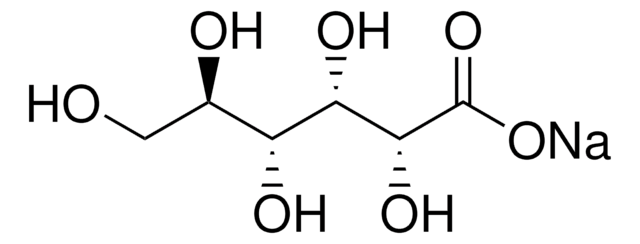推荐产品
产品名称
CFTR抑制剂II,GlyH-101, CFTR Inhibitor II, GlyH-101, CAS 328541-79-3, is a cell-permeable potent, selective and reversible open-channel blocker of CFTR (Ki = 4.3 µM in CFTR-expressing FRT cells).
品質等級
化驗
≥97% (HPLC)
形狀
solid
製造商/商標名
Calbiochem®
儲存條件
OK to freeze
顏色
yellow
溶解度
DMSO: 200 mg/mL
運輸包裝
ambient
儲存溫度
2-8°C
SMILES 字串
Brc1c(c(cc(c1O)\C=N\NC(=O)CNc2cc3c(cc2)cccc3)Br)O
InChI
1S/C19H15Br2N3O3/c20-15-8-13(18(26)17(21)19(15)27)9-23-24-16(25)10-22-14-6-5-11-3-1-2-4-12(11)7-14/h1-9,22,26-27H,10H2,(H,24,25)/b23-9+
InChI 密鑰
RMBDLOATEPYBSI-NUGSKGIGSA-N
一般說明
一种可渗透细胞的甘氨酰腙化合物,以中等速度作为CFTR的有效,选择性和可逆的开放通道阻滞剂(<1 min; 95% inhibition at 50 µM; Ki = 4.3 µM in CFTR-expressing FRT cells for apical membrane Cl- current) and exhibits desirable aqueous solubility. Shown to produce inwardly rectifying CFTR Cl- currents with reduced mean channel open time and suggested to directly interact with the channel pore at the extracellular side of the membrane. Displays minimal effects on P-glycoprotein and non-CFTR-mediated Cl- currents, and is effective in nasal and intestinal epithelia in vivo. Also available as a 25 mM solution in DMSO (Cat. No. 219675)。
生化/生理作用
在表达CFTR的FRT细胞中为4.3 µM,用于顶膜氯离子电流
主要靶标
CFTR
CFTR
产物不与ATP竞争。
可逆性:是
细胞可渗透性:是
靶标IC50:以50 µM时抑制95%
警告
毒性:标准处理(A)
重構
复溶后,等分并冷冻保存(-20°C)。储备液在-20°C条件下可稳定保存3个月。
其他說明
Sonawane, N.D., et al. 2006.FASEB J.20, 130.
Muanprasat, C., et al. 2004.J. Gen.Physiol.124, 125.
Muanprasat, C., et al. 2004.J. Gen.Physiol.124, 125.
法律資訊
CALBIOCHEM is a registered trademark of Merck KGaA, Darmstadt, Germany
儲存類別代碼
11 - Combustible Solids
水污染物質分類(WGK)
WGK 2
閃點(°F)
Not applicable
閃點(°C)
Not applicable
其他客户在看
Amnah Yamani et al.
Mucosal immunology, 14(1), 135-143 (2020-06-25)
Food-triggered anaphylaxis can encompass a variety of systemic and intestinal symptoms. Murine-based and clinical studies have revealed a role for histamine and H1R and H2R-pathway in the systemic response; however, the molecular processes that regulate the gastrointestinal (GI) response are
我们的科学家团队拥有各种研究领域经验,包括生命科学、材料科学、化学合成、色谱、分析及许多其他领域.
联系技术服务部门










